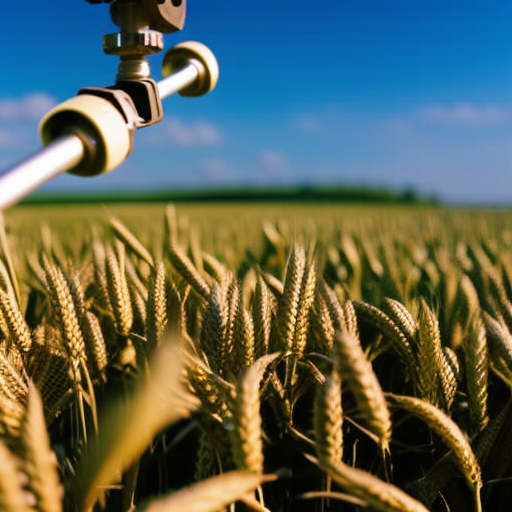Agricultural Robots: Revolutionizing Farming
Agricultural robots, also known as agribots or agrobots, are autonomous machines designed to perform various tasks in the field of agriculture. These robots are equipped with advanced sensors, cameras, and robotic arms, enabling them to carry out a wide range of agricultural activities with precision and efficiency. From planting and harvesting crops to monitoring soil conditions and applying pesticides, agricultural robots are revolutionizing the way farming is done.
Benefits of Agricultural Robots
1. Increased Efficiency: Agricultural robots can work tirelessly and consistently, without the need for breaks or rest. This leads to increased productivity and efficiency in farming operations.
2. Precision Farming: With the help of advanced sensors and cameras, agricultural robots can gather data about soil conditions, plant health, and other important parameters. This data can be used to optimize farming practices, resulting in higher crop yields and reduced resource wastage.
3. Labor Shortage Solution: The agriculture industry often faces a shortage of labor, especially during peak seasons. Agricultural robots can fill this gap by performing tasks that would otherwise require manual labor.
4. Reduced Environmental Impact: By using precise amounts of water, fertilizers, and pesticides, agricultural robots can minimize the negative environmental impact of farming. This leads to more sustainable and eco-friendly agricultural practices.
5. Safety: Some agricultural tasks, such as handling hazardous chemicals or working in extreme weather conditions, can be dangerous for humans. Agricultural robots can perform these tasks safely, reducing the risk of accidents and injuries.
Types of Agricultural Robots
1. Harvesting Robots: These robots are designed to autonomously harvest crops, such as fruits and vegetables. Equipped with computer vision and robotic arms, they can identify ripe produce, pick it gently, and place it in containers.
2. Planting Robots: Planting robots automate the process of sowing seeds or transplanting seedlings. They can precisely place seeds at the optimal depth and spacing, ensuring uniform growth and reducing seed wastage.
3. Weeding Robots: Weeding robots use computer vision and machine learning algorithms to identify and remove weeds from fields. This reduces the need for herbicides and manual labor, resulting in cost savings and improved crop health.
4. Spraying Robots: These robots are equipped with sprayers and sensors to apply fertilizers, pesticides, or herbicides to crops. They can precisely target specific areas, reducing chemical usage and minimizing environmental impact.
5. Monitoring Robots: Monitoring robots are designed to collect data about soil conditions, plant health, and weather patterns. They can analyze this data in real-time and provide farmers with valuable insights for decision-making.
6. Milking Robots: Milking robots automate the milking process for dairy cows. They can identify individual cows, clean their udders, attach milking cups, and monitor milk quality, all without human intervention.
Challenges and Future Outlook
While agricultural robots offer numerous benefits, there are still some challenges to overcome. One major challenge is the high cost of these robots, which can be a barrier for small-scale farmers. Additionally, the complexity of integrating robots into existing farming systems and the need for specialized training are also hurdles to widespread adoption.
However, the future of agricultural robots looks promising. Advancements in robotics, artificial intelligence, and sensor technologies are driving innovation in this field. Researchers are developing robots with improved capabilities, such as the ability to differentiate between crops and weeds, or to perform delicate tasks like pruning and grafting. The use of swarm robotics, where multiple robots work together in a coordinated manner, is also being explored.
In conclusion, agricultural robots are transforming the agriculture industry by increasing efficiency, enabling precision farming, and addressing labor shortages. These robots can perform a wide range of tasks, from planting and harvesting to monitoring and spraying. While there are challenges to overcome, the future of agricultural robots looks bright, with ongoing advancements in technology and increasing adoption by farmers around the world.












